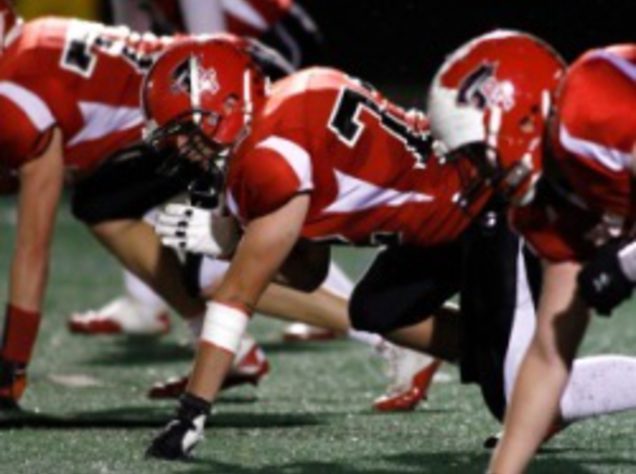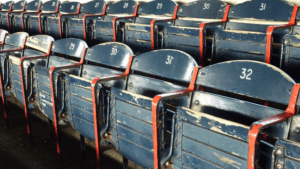First of all, I want to thank all of the readers and coaches out there and Mike Kuchar. Without any of you, all of this great information would not be possible to obtain and share. At the semi-pro level we may not always have the resources that we need. But we make it work. What I want to briefly discuss today is a simple way to install a no huddle attack. But the very first thing we will need to do, is have a player evaluation whether you are coaching this team for the first time are you have been there for a few seasons. You still need to grade out what type of players you have, to see If you have the personnel for a no huddle team. What I look for in players, do they have a love for the game, are they teachable, coachable, and trainable. Are they of a team mold. Next I look for their physical attributes. Can you run, catch, throw, and tackle. What are your goals for this football season? And how can we make that happen? These are things that I make them answer. I even give them a football test before we even hit the field. I want to see how much they know. I have found dealing with some young men, even if they don’t know something. They might not want to share that with us. So I can take that person to the side and help them along.
Conditioning, this is one of the key factors for your team. They have to be able to run effectively and consistent through out the entire game. As I have found, running the offense at a faster rate in practice, than what they will actually do in a game is also key. I have them do military style workouts as well as football workouts, so as to make them more physically and mentally tuff. Nutrition is also a big part of our conditioning, what they eat monday through friday also helps determine wins/losses. Finally, the player with the ball last is the (ref) player…he finds the nearest referee and hand him the ball. This cuts down the time the refs have to locating the ball and spotting it for you. Every practice I get a stop watch and I time my offense. I want them to run as many plays as they can in a two minute span. Once they make it to the end zone they turn around start from the 1 yard line and go the other way. You want to establish early on that you want to run a lot of plays. Because football is nothing but math. But to them its just football. With that being said I want the offense on the field as much as possible. There is a High Reward / High Risk factor that is involved. Telling your players that you look to run at least 100 offensive plays a game, gives them a bar to reach for. Chances are that you will not run that many…but you want them to always stride further to improve themselves and give yourself as many oppurtunites as you can. (Diagram 1) is our basic 2×2 set. And that is followed by (Diagram 2) our 3×1 set. The letter codes for wide outs and backs:
X= my fastest receiver (featured player).
Z= my number two receiver.
Y= can be a TE or receiver (depends on formation set).
F=can be a FB or receiver (depends on formation set).
H=halfback
T=when we use our three backs (tailback)
Q=QB

The formations are read from left to right with X and Y always on the LOS. A play call may go something like “Rifle Rt. “F” join 137 “Z” shallow H-jerk Lt. The QB may change the protection of course depending on what the front seven of the defense looks like. I allow our QBs to have a lot of freedom at the LOS. Because they are right there, and could possibly place us in a more successful play. Any motions I may tag would could at the front of the play call as to keep it simple for our players to understand. We don’t have the practice time most programs have, so we have to consolidate information into blocks that they can handle. Once they learn the basic formation packages, they learn the route tree as well as word routes. The audibles are mixed in so that their is a complete understanding of where we want to go and what we want to do. Once they have mastered that information I move on to more detailed blocking schemes and red zone. Once a week I take the offense through a game scenario with a running clock. Complete with kickoffs and timeouts. this puts them in the frame of mind to be prepared for possible situations they could face.
There is a two foot rule between lineman, and the tackles are in a two point stance. The O-line goes to a three point when we are in short yardage. Other wise that is the alignment throughout the game. We also use a zone blocking principle. It is the quickest and easiest to teach. I also use a combination of word routes and a number tree for my wideouts. Getting the team to study their playbooks / plays is a challenge for any staff. We keep practice interesting. By changing up the sequence and adding new wrinkles to what we do weekly. I do have to say, I don’t move on to anything new until they have a grasp of the previous information.
Repetition this is what makes the offense go. Everyone may think it is the play design. It is just the fact that it’s a no huddle. When in actuality, its just doing the same thing over and over again. I just make them speed up what they know how to do. There are times I just make the offense throw on air all the way down the field no defense…(defense comes in later). I will throw in a penalty just for the sake of pushing them back. They have to face adversity sometimes…once I get them good and tired. Than I will change up the plays and formation and bring in the defense. So now they are tired, and have to work even harder to execute the offense. Practices are a challenge, we have a guide on what we want to accomplish but, we do make it fun and challenging for the team. All of a sudden right in the middle of practice I may call for the field goal team to come out and hit a 45 or 50 yarder. I like for everyone to keep their heads in practice and in the games because you will never know when you may need that.
Communication is a huge part of what we are doing at all times. We do use headsets at our level, sometimes the verbiage can become very wordy. So to cut down on play calls. The play is directly communicated to the QBs. However, I also use place cards for certain situations as well. It helps aid the QB in his audibles so to some degree I give them a play but their are times I will give them an audible as well. So I still know whats coming. Whether its a good series are not so good series I talk to the QB and find out what he’s looking at. I make him tell me why we went to a certain location with the ball. I want them to take full responsibility and control of the offense.
How useful was this post?
Click on a star to rate it!
Average rating 5 / 5. Vote count: 3
No votes so far! Be the first to rate this post.



